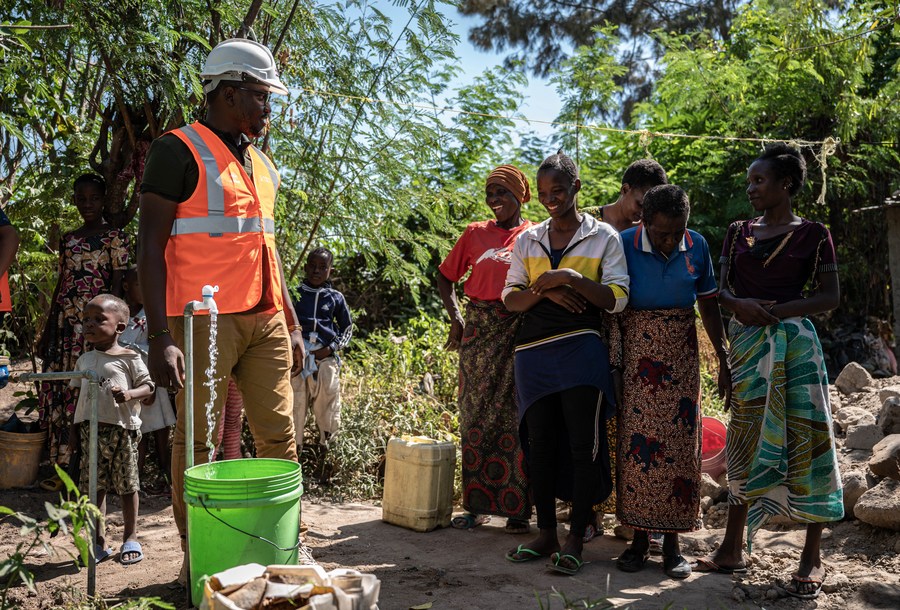China’s Initiatives Promote Global Cooperation and Common Prosperity

In response to the new era, Chinese modernization offers an alternative to Western liberal capitalist principles.
China’s initiatives have emerged as a beacon on the global stage, signaling a comprehensive response to the unpredictable shifts and impending transformations the world is facing.
A decade ago, the Belt and Road Initiative (BRI) was formally announced. Though initially perceived by some as “freehand brushwork,” hindsight reveals it as a prescient response to a faltering global economy. This pivot marked China’s departure from following Western-led models of economic and political policies toward establishing its own path in global affairs.
As the shortcomings of globalization became evident, particularly after the 2008 financial crisis, China introduced the BRI as a new development paradigm. This framework aimed to reflect China’s historic developmental journey while circumventing the pitfalls of liberalist globalization and Western-centric development aid practices. The Western globalization ethos, represented by the 1989 Washington Consensus, championed neoliberal principles such as free markets, privatization, and fiscal discipline. Yet, this approach subtly hinted at an inevitable alignment under a dominant power, often overlooking the need for collaboration and integration.
In stark contrast, the China-proposed BRI emphasizes collaboration and economic integration. In the early stages of the BRI, China introduced the foundational principle of “consultation, joint construction, and shared benefits” as the guiding philosophy, underscoring China’s vision for a more inclusive, cooperative, and harmonious international order.
The BRI has focused on delivering strategic infrastructure, identifying it as the bedrock of economic development. Although the initiative has faced fierce, often unjustified criticism and opposition from the West, many infrastructural challenges arise from the inherent complexities of grand projects, not from intentional geopolitical maneuvering or the creation of dependencies. Undoubtedly, over the past decade, China has undertaken a profound journey of learning, grappling with the nuances of overseas and cross-national planning, financing, and infrastructure execution, while deepening its engagement with affected communities. As has been concluded elsewhere, China’s BRI has transitioned from “freehand to fine brushwork.”
On the 10th anniversary of the Belt and Road Initiative this year, China has signed more than 200 Belt and Road cooperation agreements with over 150 countries and 30 international organizations, lifting around 40 million people out of poverty.

A decade ago, the impending epochal shift in global power dynamics, which called for extensive changes at national, regional, and global levels, was largely unforeseen. Now, it is evident that the Global South, which houses the majority of the world’s population and is bolstered by the economic strength of the BRICS nations, is outpacing the West in terms of GDP growth. As the West experiences a relative decline and the Global South rises, the world is confronted with a series of unparalleled challenges.
Amidst climate change, a stagnant global economy, deteriorating international security, and the inadequacies of existing multilateral cooperation, China has introduced three new global initiatives: the Global Security Initiative (GSI), the Global Development Initiative (GDI), and the Global Civilization Initiative (GCI).
The BRI has been focused on building economic ties and spurring growth through infrastructure projects. Infrastructure continues to be seen as a focal point of cooperation and a driving force for transformation, helping to convert latent economic advantages into tangible benefits. It assists BRI countries in forging their dynamic development paths, thereby boosting trade and creating job opportunities.
The GDI adopts a broader approach, including health, education, and technology cooperation, while emphasizing sustainability and achieving the U.N. Sustainable Development Goals (SDGs). This is urgently needed, as only 12% of the SDGs’ targets have been met, with only half of the timeframe until the 2030 goal remaining.
The GDI aims for global outreach from its inception, primarily partnering with developing countries to share China’s development experience, facilitate technology transfers, and provide training. Meanwhile, the GCI reiterates the importance of collaboration, aiming to enhance mutual respect, mutual learning, and harmonious coexistence among civilizations. Moreover, the GSI emphasizes strengthening security collaborations to ensure a holistic and stable global development framework.
In response to the new era, Chinese modernization offers an alternative to Western liberal capitalist principles. It sets a precedent for the Global South and demonstrates China’s pioneering leadership in navigating the challenges of the 21st century. As more “small but beautiful” programs, which promise rapid and sustainable impact, especially in health, education, and technology, are anticipated to be implemented, the BRI aligns itself with fulfilling the Sustainable Development Goals. In the long term, the implementation of these three initiatives, in concert with the BRI, will help further promote global cooperation and achieve common prosperity.
Thorsten Jelinekis is visiting scholar at Hertie School’s Centre for Digital Governance in Berlin and senior fellow and Europe director at Taihe Institute.
 Facebook
Facebook
 Twitter
Twitter
 Linkedin
Linkedin
 Google +
Google +










